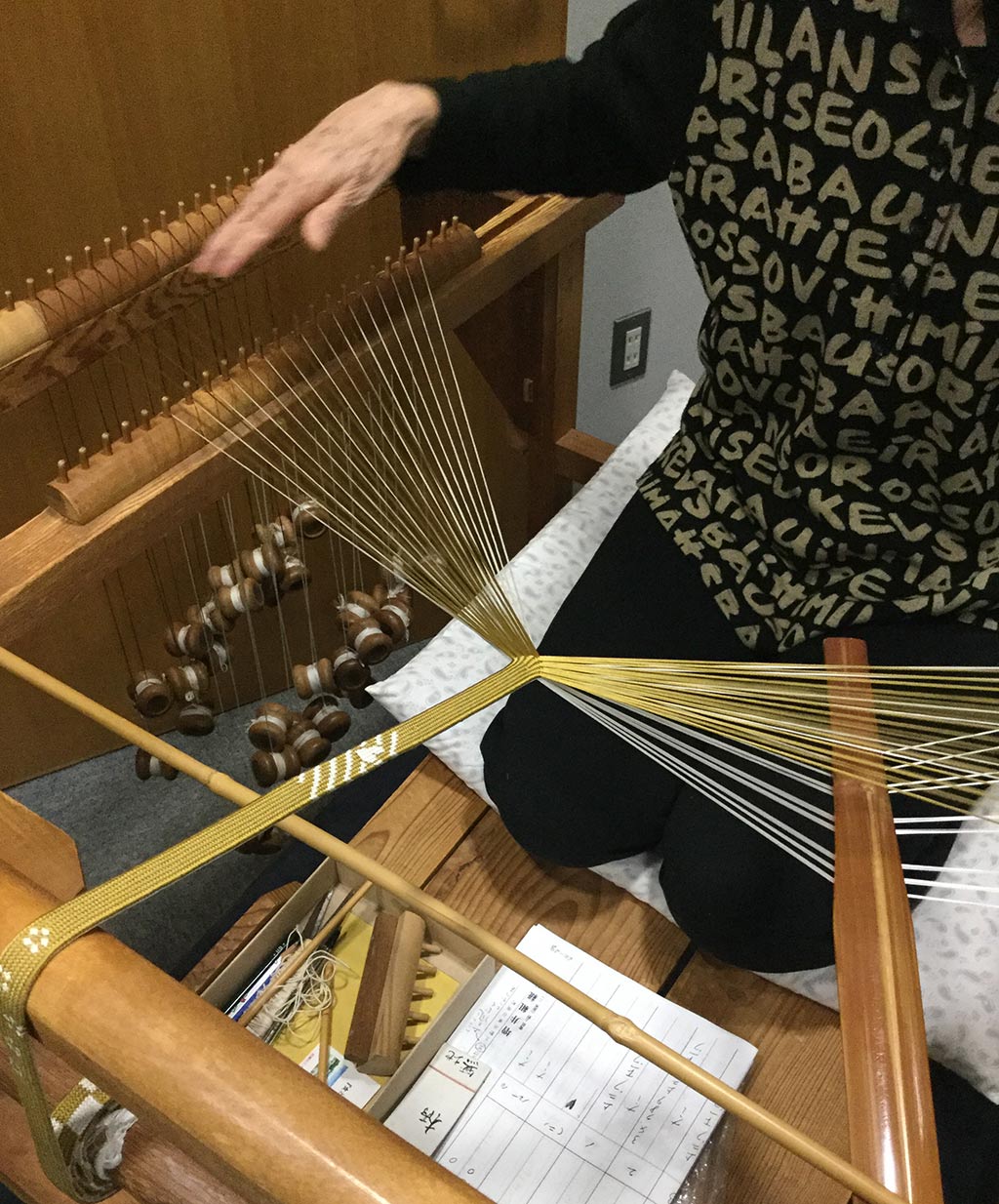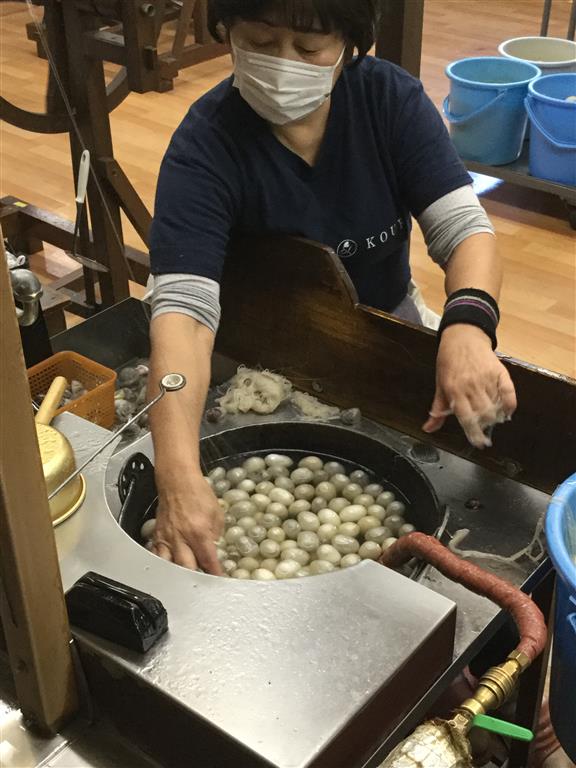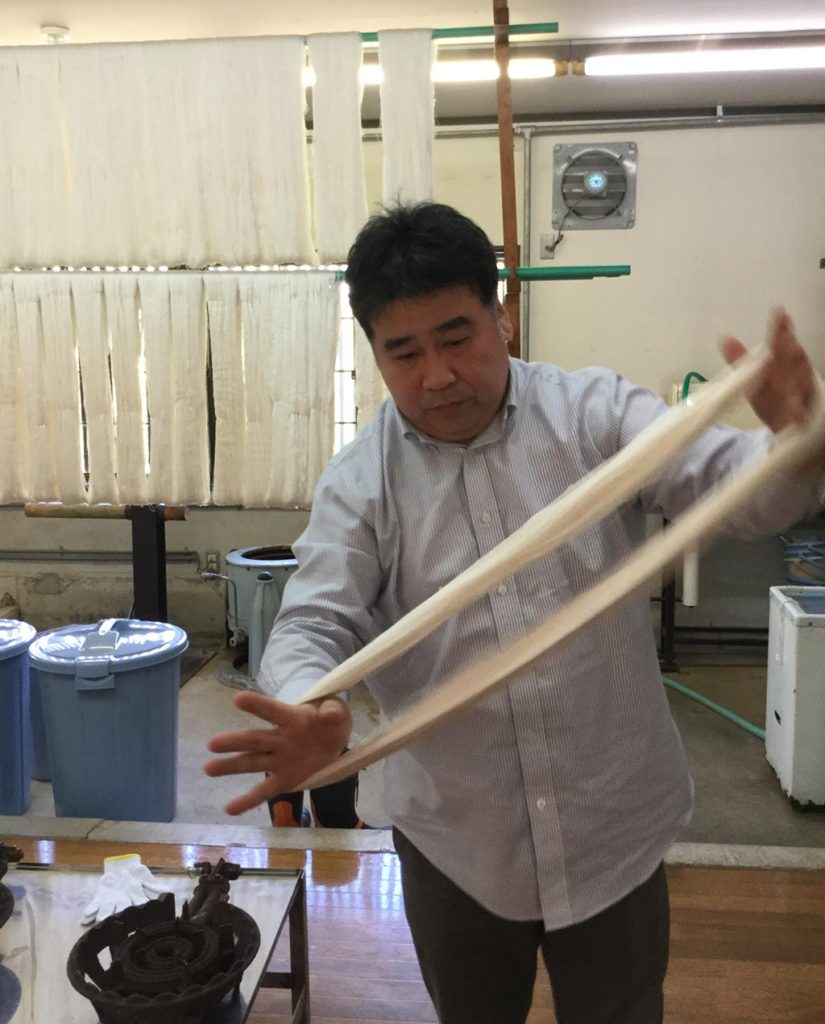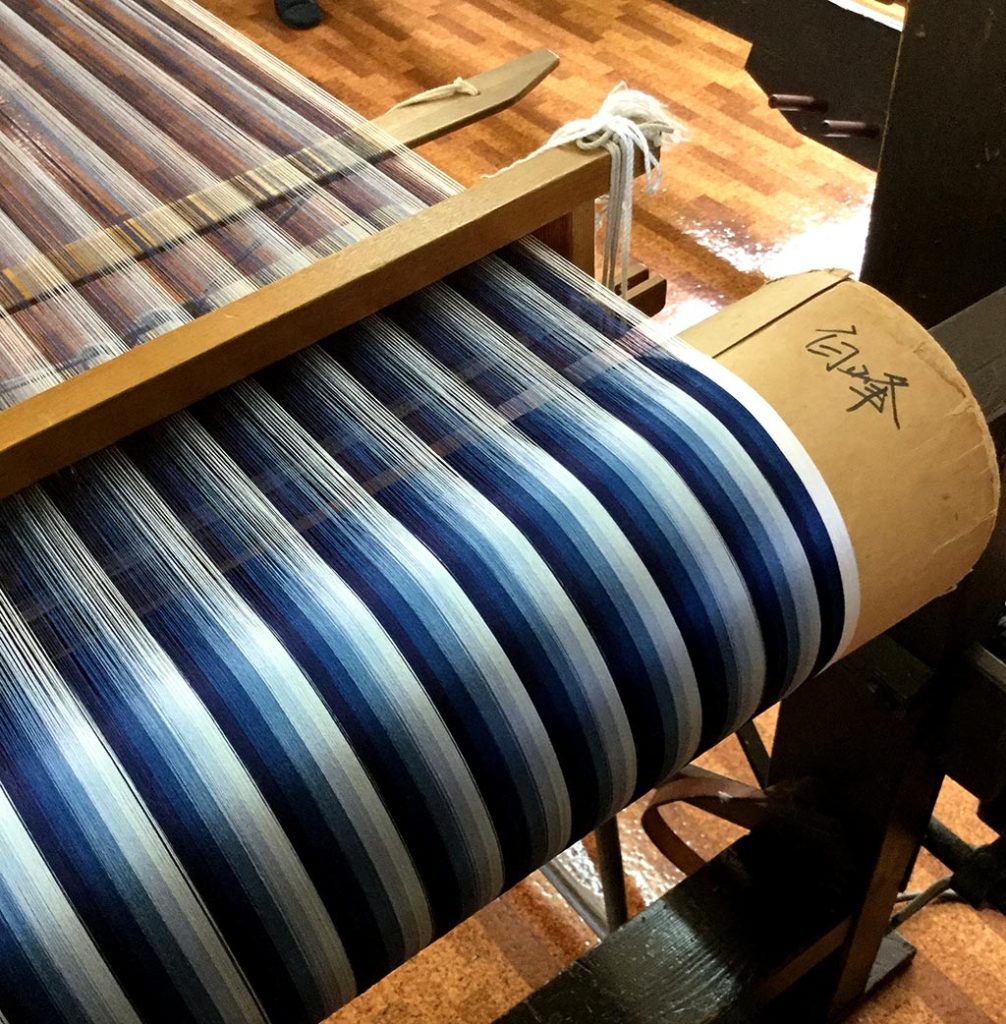
The Japan Textile Tour 2017 with Intentionally Different was another amazing adventure in Japan. Once again we travelled city and countryside, through very long mountain tunnels, alongside tremendous rivers and the mountains of changing autumn leaves. The itinerary and organisation of the tour allowed us to see many textile places in more remote areas and in a short time span.
The tour, after the workshop in Saori no Mori, went to Iga. This is a town famous for braiding (and Ninja). Our introduction was by master braider, Hideko Matsuda who is one of 14 takadai braiders in the town.
At 70 years of age braiding fills her day and she sits on a high mounted platform on her knees to do the braiding with 60 weighted bobbins.

It’s these small things that we can see in Japan that we might overlook. Within these small braids lies a lot of history and continuing craft practice, even when a braid has come from a factory setting. I gave each of the travellers a mardai card to enter this world in a small way, making a round braid while we were travelling. It’s hard to know when a hands-on offer is right. I was delighted that it was generally well received. With a hands on offer while travelling we can’t enter a more sophisticated or highly skilled experience because there are differing interests in the group and time constraints. It takes 12 years to be a designated braider and we just didn’t have the time on tour!
Another memorable moment, for me, was the visit to a Ushikubi Tsumugi silk factory very deep into the huge mountains near Kanazawa. The silk produced here is from double cocoons, giving exceptional strength among other features. Also referred to as Kugi Nuki Tsumugi or ‘nail pulling silk’ which means if the fabric gets stuck on a nail as you brush past, it will pull the nail out of the wood rather than just rip the fabric. Once again it’s the little details that make every textile from each area so unique. I’m always learning – who knew that double cocoons of silk could be created. This company was wonderful for any weaver to visit as their small scale but very complete production showed the links in the chain to cloth production.

The cloth is woven with the extra strong silk on every alternate row in the weft so the fabric wouldn’t be too stiff. And 90% of their production was in natural white for Kaga Yuzen painted textiles in Kanazawa. Each skill and tradition builds on the other. Importantly, these Japanese textile traditions are being maintained, not just for esoteric exhibition, but for working functional arts within the community. Craft skills like these can’t survive unless the product of the work is needed and purchased.
This factory also had very interesting methods of creating stripes when beaming the warp beam. This process was separate to the loom and the colours were ‘mixed’ into the precise stripes several metres before the beaming. The warping beam had to be a long way from the thread spools and it’s not a method I’ll be using any time soon in this way, but I did see a version of it at Saori no Mori for use with the beaming unit. It has limitations but the set up saves time in winding an exacting stripe order. So many wonders to see!

